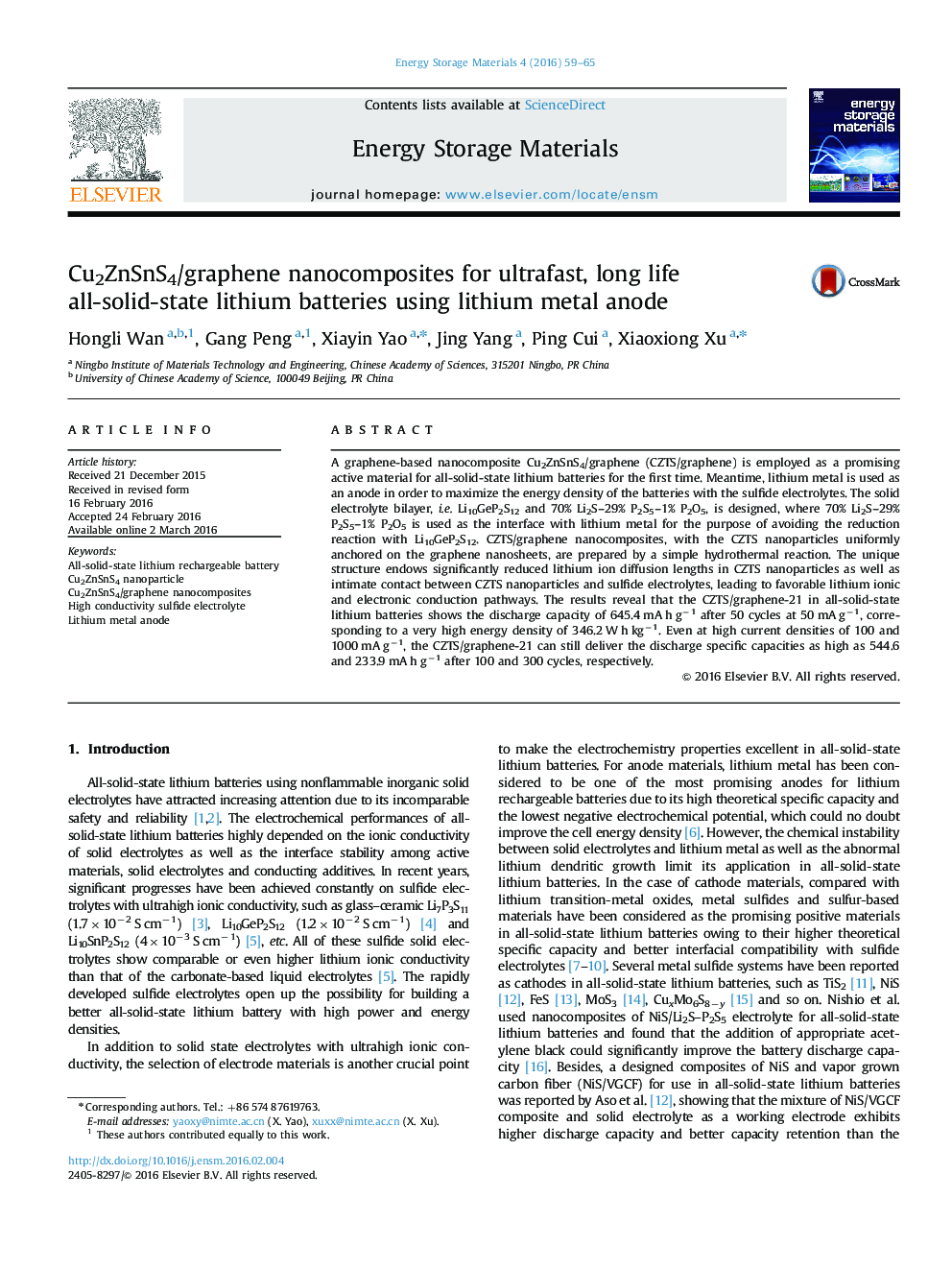| کد مقاله | کد نشریه | سال انتشار | مقاله انگلیسی | نسخه تمام متن |
|---|---|---|---|---|
| 1564594 | 1513997 | 2016 | 7 صفحه PDF | دانلود رایگان |

A graphene-based nanocomposite Cu2ZnSnS4/graphene (CZTS/graphene) is employed as a promising active material for all-solid-state lithium batteries for the first time. Meantime, lithium metal is used as an anode in order to maximize the energy density of the batteries with the sulfide electrolytes. The solid electrolyte bilayer, i.e. Li10GeP2S12 and 70% Li2S–29% P2S5–1% P2O5, is designed, where 70% Li2S–29% P2S5–1% P2O5 is used as the interface with lithium metal for the purpose of avoiding the reduction reaction with Li10GeP2S12. CZTS/graphene nanocomposites, with the CZTS nanoparticles uniformly anchored on the graphene nanosheets, are prepared by a simple hydrothermal reaction. The unique structure endows significantly reduced lithium ion diffusion lengths in CZTS nanoparticles as well as intimate contact between CZTS nanoparticles and sulfide electrolytes, leading to favorable lithium ionic and electronic conduction pathways. The results reveal that the CZTS/graphene-21 in all-solid-state lithium batteries shows the discharge capacity of 645.4 mA h g−1 after 50 cycles at 50 mA g−1, corresponding to a very high energy density of 346.2 W h kg−1. Even at high current densities of 100 and 1000 mA g−1, the CZTS/graphene-21 can still deliver the discharge specific capacities as high as 544.6 and 233.9 mA h g−1 after 100 and 300 cycles, respectively.
A graphene-based Cu2ZnSnS4 nanocomposite is demonstrated as a promising active material for all-solid-state lithium batteries, which shows good interfacial compatibility with sulfide electrolyte, resulting excellent rate capability and cycling stability. Meanwhile, lithium metal anode is employed in order to maximize the energy density of the all-solid-state lithium batteries, showing a high energy density of 346.2 W h kg−1 at 50 mA g−1.Figure optionsDownload as PowerPoint slide
Journal: Energy Storage Materials - Volume 4, July 2016, Pages 59–65